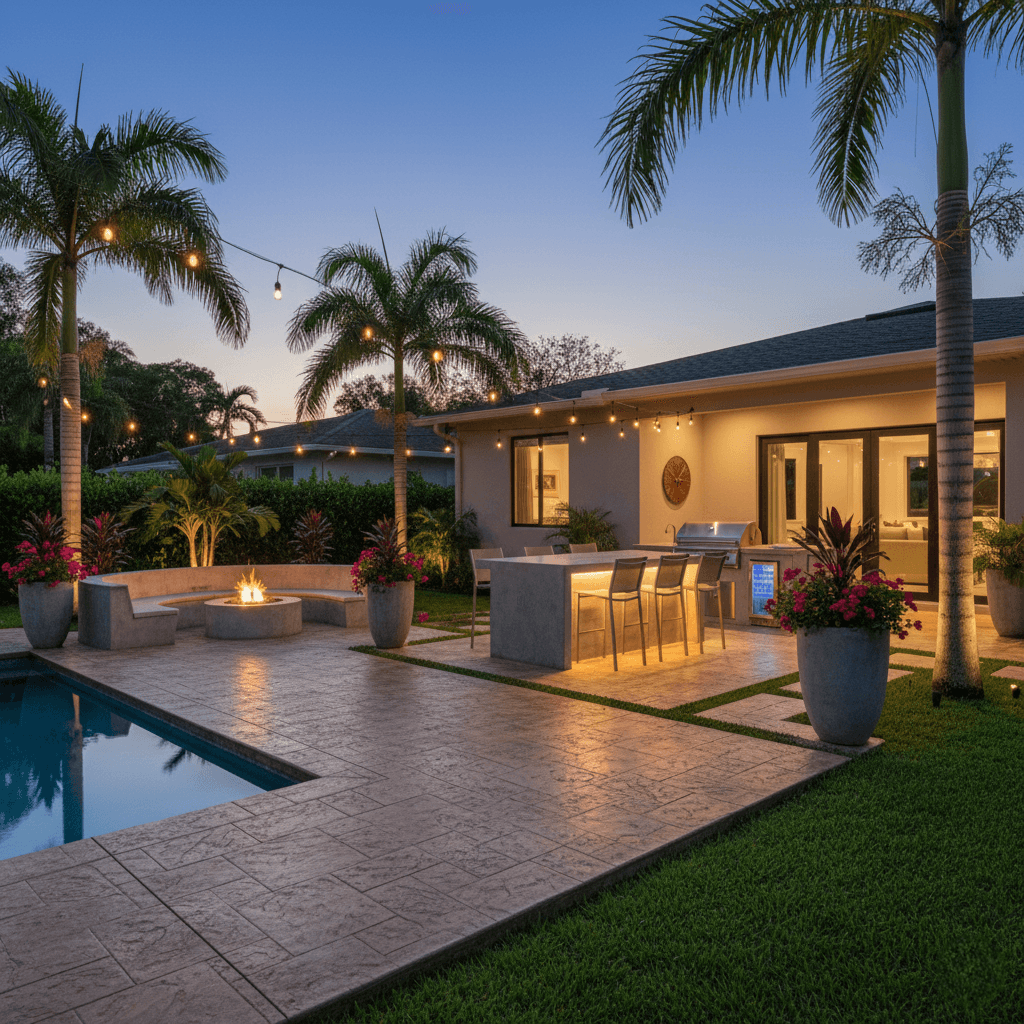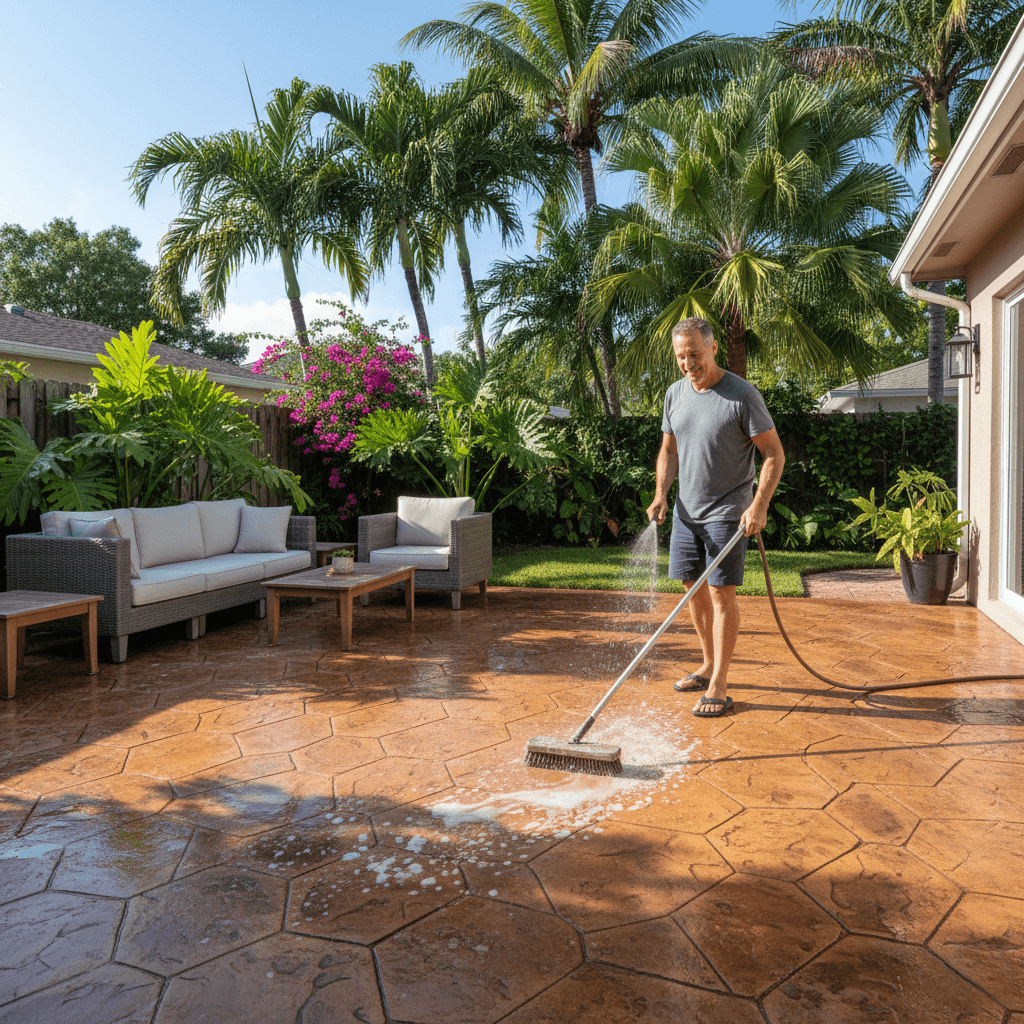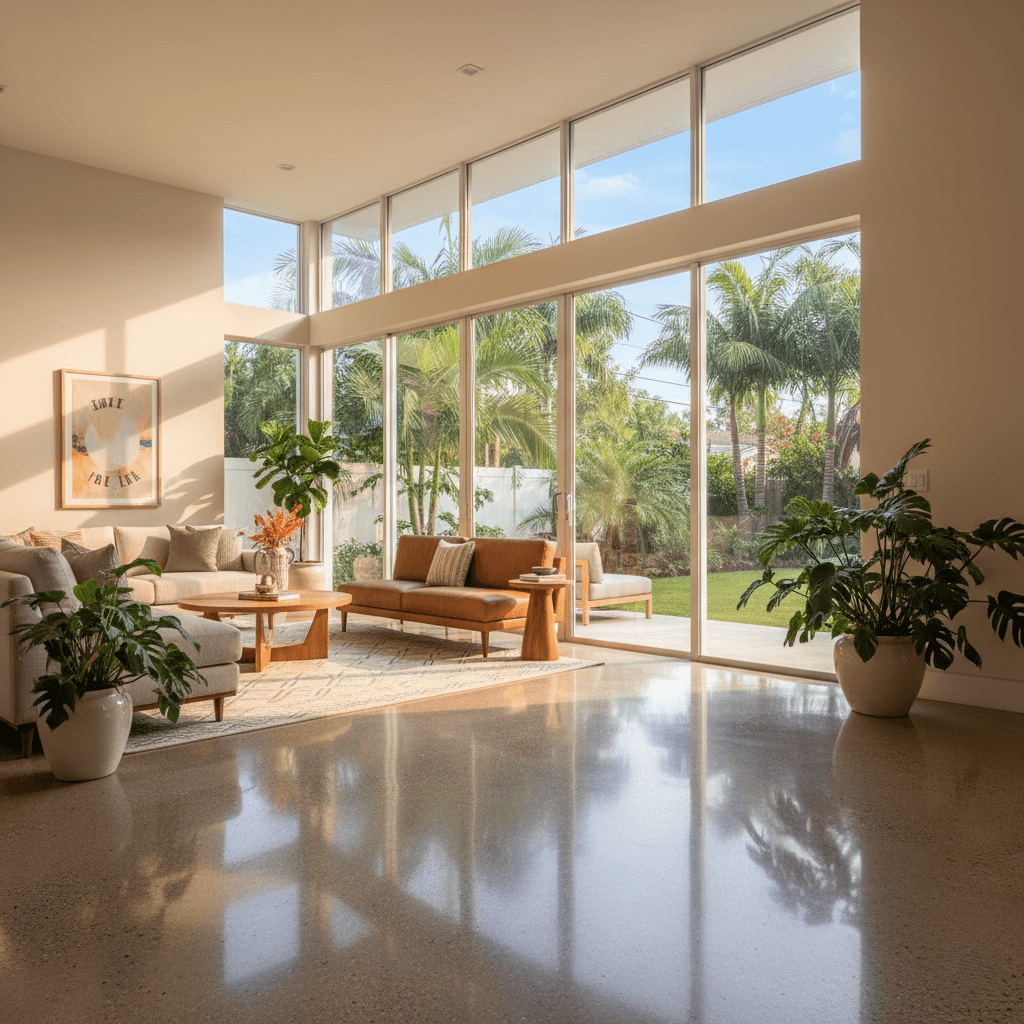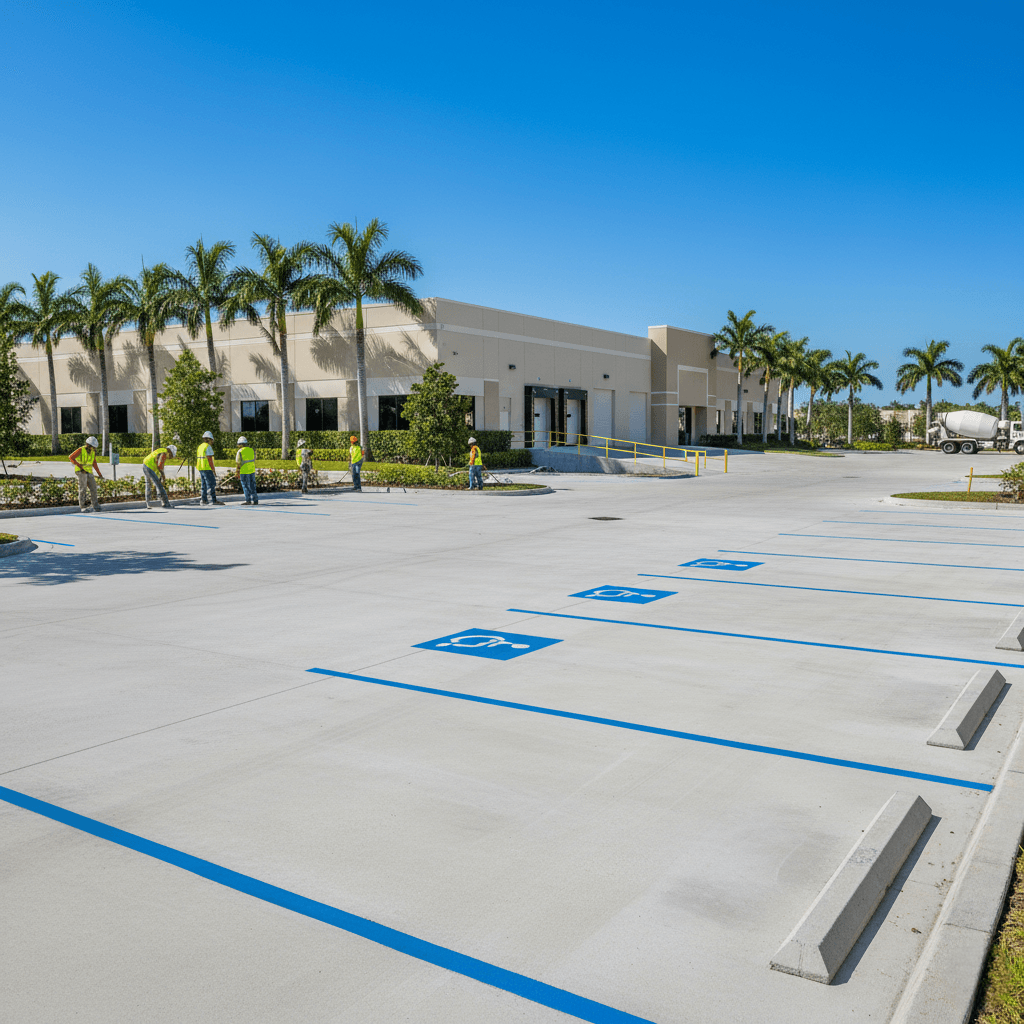
Why Choose Stamped Concrete Patios in Miami Gardens
Stamped Concrete Patio Miami Gardens
Outdoor living spaces define the South Florida lifestyle, providing venues for family gatherings, weekend barbecues, and quiet evening relaxation. Selecting appropriate materials for these spaces requires careful consideration of aesthetics, durability, maintenance requirements, and budget constraints. Among available options, stamped concrete emerges as an increasingly popular choice that offers compelling advantages over traditional paving materials. Understanding these benefits helps homeowners make informed decisions that enhance both property value and outdoor enjoyment throughout neighborhoods from Bunche Park to the areas surrounding Hard Rock Stadium.
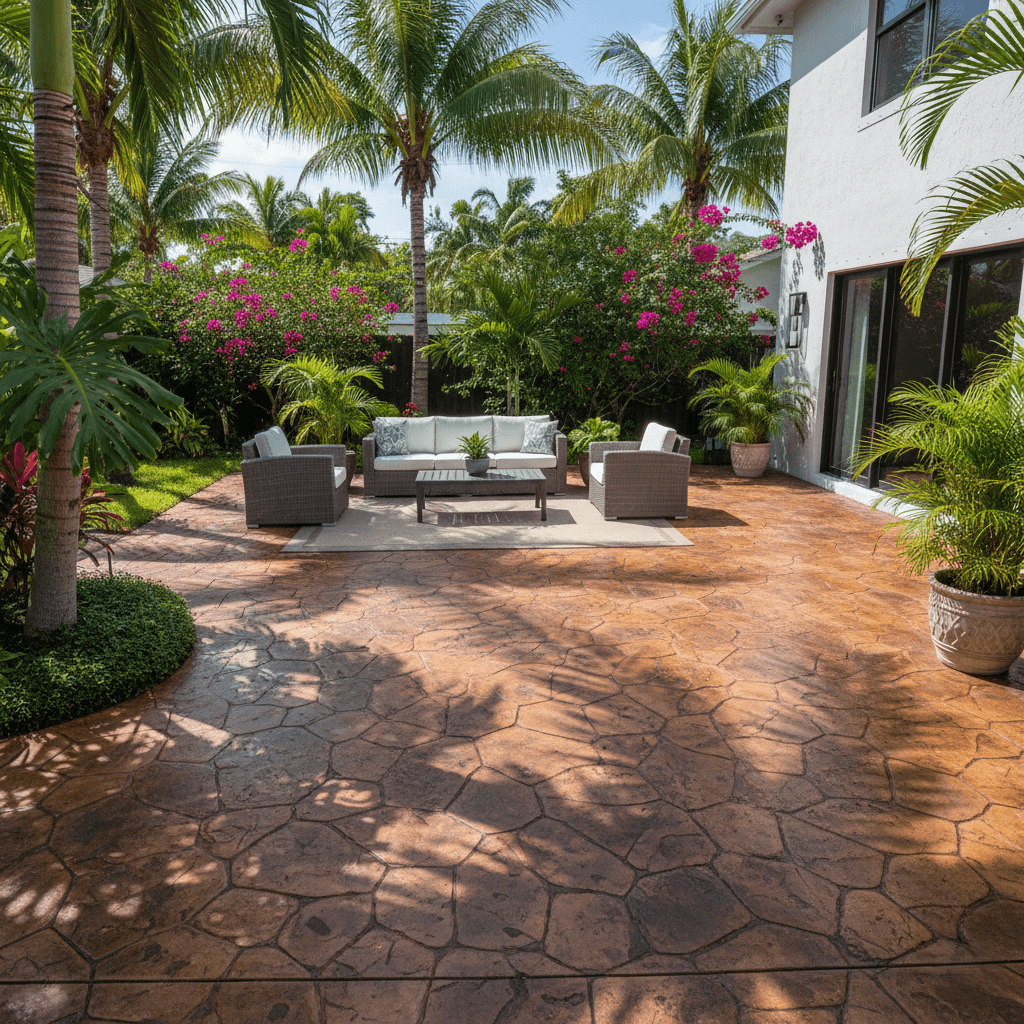
Cost Effectiveness Without Compromising Appearance
Budget considerations influence nearly every home improvement decision. A stamped concrete patio delivers premium aesthetics at significantly lower costs compared to natural stone, brick pavers, or tile installations. While individual brick pavers or natural stone materials carry higher unit prices, labor expenses associated with their installation substantially increase total project costs. Each paver requires individual placement, alignment, and leveling, extending installation timelines and driving up labor charges.
Stamped concrete installation proceeds more efficiently because contractors pour and finish continuous surfaces rather than placing thousands of individual units. This streamlined process reduces labor hours while delivering comparable visual impact. Homeowners throughout the Carol City neighborhood or near Lake Lucerne typically spend eight to twelve dollars per square foot for basic stamped designs, compared to fifteen to twenty-five dollars or more per square foot for comparable natural stone or premium paver installations. Mid-range designs featuring borders, contrasting colors, or multiple patterns cost twelve to eighteen dollars per square foot, still remaining considerably more affordable than high-end traditional materials.
Long-Term Value Considerations
Initial installation expenses represent only part of the financial equation. Long-term maintenance costs and material longevity significantly impact total ownership expenses. Traditional pavers require periodic joint sand replenishment, individual unit replacement when damage occurs, and ongoing weed control between units. Natural stone demands sealing, periodic cleaning with specialized products, and potential replacement of cracked or spalled pieces. These recurring expenses accumulate over the years, eroding initial cost advantages that traditional materials might offer.
Exceptional Design Flexibility and Customization
Design versatility stands among the most compelling advantages that stamped concrete offers. Modern stamping techniques replicate virtually any material, including flagstone, slate, cobblestone, brick, ashlar stone, wood planking, and even decorative tile patterns. Specialized stamps molded from actual materials create remarkably realistic textures and patterns that closely mimic natural stone and traditional pavers at a fraction of their cost.
Color customization further enhances design possibilities. Contractors apply integral colors throughout the concrete mix or use color hardeners and stains on the surface to achieve desired hues. Multiple color applications create depth and variation that replicate natural stone’s organic appearance. Properties near the Norland community or throughout Scott Lake benefit from choosing colors and patterns that complement existing architecture and landscape features. This customization allows homeowners to create cohesive outdoor designs that enhance overall property aesthetics.
Seamless Integration With Property Features
Unlike traditional pavers that require cutting and fitting around curves, borders, or irregular shapes, stamped concrete conforms easily to any configuration. Circular patios, flowing organic shapes, and intricate borders present no additional challenges during installation. This flexibility proves particularly valuable when integrating patios with existing landscape elements, pools, or architectural features. The continuous surface eliminates gaps and interruptions that characterize paver installations, creating unified outdoor spaces that flow naturally from one area to another.
Superior Durability in the South Florida Climate
Miami Gardens’ humid subtropical climate subjects outdoor surfaces to intense challenges, including high temperatures, heavy rainfall, strong sun exposure, and elevated humidity levels. These conditions test material performance and longevity. Stamped concrete demonstrates excellent durability under these demanding circumstances when properly installed and maintained. The monolithic surface resists settling and shifting that plague paver installations over time.
Traditional pavers rest on sand bases that can erode or wash away during the heavy rains common throughout South Florida. Individual units settle unevenly, creating trip hazards and unsightly depressions. Edge restraints loosen, allowing perimeter pavers to shift outward. These problems necessitate periodic releveling and adjustment, which increases maintenance costs and disruption. Stamped concrete eliminates these concerns by providing a continuous slab that maintains consistent elevation and surface integrity.
Weather Resistance and Performance
South Florida’s weather patterns demand materials capable of withstanding moisture, heat, and UV exposure. Properly sealed stamped concrete resists water penetration that can cause subsurface erosion and structural problems. The sealed surface also protects against staining from organic materials, oils, and other substances common in outdoor environments. Properties throughout the Andover area or near the Palmetto Expressway experience seasonal rainfall that tests drainage capabilities and surface durability.
Reduced Maintenance Requirements
Time spent maintaining outdoor surfaces detracts from time available to enjoy them. Stamped concrete requires significantly less maintenance than traditional paving materials, delivering ongoing convenience that busy homeowners appreciate. Basic cleaning involves periodic sweeping, occasional pressure washing, and prompt attention to spills or stains. This straightforward maintenance routine contrasts sharply with the demands of alternative materials.
Traditional pavers need regular joint sand replenishment as material washes away or blows out. Weeds germinate in joints despite preventive measures, requiring ongoing removal efforts. Individual pavers that crack or become stained need replacement, though finding exact color matches proves challenging as materials age and fade differently. Natural stone requires specialized cleaning products, periodic sealing with appropriate sealers, and careful attention to avoid damage from harsh chemicals or improper cleaning techniques.
Simplified Long-Term Care
Resealing represents the primary maintenance requirement for stamped concrete surfaces. Applying fresh sealer every two to three years maintains color vibrancy, enhances stain resistance, and protects against moisture penetration and UV damage. This straightforward maintenance task takes minimal time and can be completed by homeowners or professionals. The predictable maintenance schedule and modest costs make budgeting simple while ensuring surfaces remain attractive and functional for decades.
Enhanced Safety Features
Safety considerations influence material selection, particularly for families with children, elderly residents, or properties featuring pool areas. Stamped concrete offers several safety advantages over traditional materials. The continuous surface eliminates individual paver edges that can create trip hazards, particularly as units settle unevenly over time. This seamless characteristic proves especially valuable around pools, outdoor kitchens, and high-traffic areas throughout properties near Rolling Oaks or Vista Verde.
Textured stamp patterns provide inherent slip resistance that enhances safety during and after Miami Gardens’ frequent rain showers. Different patterns offer varying traction levels, allowing homeowners to select appropriate textures for specific applications. Pool deck areas benefit from deeper textures that maximize grip when wet, while entertainment spaces might use subtler textures that remain comfortable for bare feet. Proper sealer selection further enhances slip resistance, with specialized products available that maintain traction even when surfaces become wet.
Faster Installation Timeline
Project duration affects household disruption and overall convenience. Stamped concrete installations typically proceed faster than traditional paver projects, minimizing inconvenience and allowing quicker enjoyment of new outdoor spaces. Contractors can complete most residential patio installations within two to four days, depending on size and design complexity. This timeline includes site preparation, concrete placement, stamping operations, and initial finishing work.
Traditional paver installations require more time due to the meticulous nature of individual unit placement. Each paver demands careful positioning, leveling, and alignment. Edge restraints need secure installation, sand bases require multiple compaction passes, and joint sand must be swept and compacted between units. Complex patterns or mixed materials extend timelines further. These extended installation periods mean prolonged disruption to normal household activities and outdoor space access.
Immediate Usability Considerations
While pavers can bear weight immediately after installation, stamped concrete requires a curing time before sustaining full loads. Most installations support foot traffic within 24 to 48 hours and vehicle traffic after seven days. This curing requirement represents a minor inconvenience offset by other advantages, including lower costs, superior durability, and reduced maintenance demands over the surface’s lifespan.
Property Value Enhancement
Outdoor living spaces significantly influence property values and buyer perceptions throughout Miami Gardens. Well-designed, properly maintained patios enhance curb appeal, extend usable living space, and create desirable outdoor entertainment areas. Stamped concrete installations deliver these benefits while demonstrating quality construction and thoughtful property improvements that appeal to potential buyers.
The attractive appearance, low maintenance requirements, and durability that stamped concrete provides make properties more marketable when homeowners decide to sell. Buyers appreciate outdoor spaces that require minimal upkeep while offering aesthetic appeal and functional versatility. The long lifespan of properly installed and maintained stamped concrete means buyers can enjoy outdoor spaces for years without facing replacement costs or major renovation expenses.
Environmental Considerations
Environmentally conscious homeowners appreciate that stamped concrete offers certain sustainability advantages over traditional materials. The solid surface facilitates better water runoff management when properly sloped, directing moisture away from structures and toward appropriate drainage areas. This characteristic helps prevent erosion and water damage that can occur with permeable paver systems that lack adequate drainage planning.
Concrete production has evolved to incorporate recycled materials and more efficient manufacturing processes. The longevity that stamped concrete delivers means fewer replacement cycles compared to less durable materials, reducing long-term resource consumption and waste generation. These factors make stamped concrete a responsible choice for homeowners seeking to balance aesthetics, functionality, and environmental impact.
Professional Installation Importance
Achieving optimal results with stamped concrete requires experienced contractors who understand proper techniques, timing, and finishing procedures. The stamping process demands precise execution within narrow time windows as concrete begins setting. Color application, pattern alignment, and surface finishing all require skills developed through extensive experience. Attempting DIY installation rarely produces satisfactory results and often leads to expensive removal and replacement.
Professional contractors bring specialized equipment, including stamping mats, texture skins, color application tools, and finishing implements. They understand concrete mix designs appropriate for South Florida conditions, proper curing techniques, and sealing procedures that protect investments and ensure longevity. Working with qualified professionals guarantees results that meet expectations while avoiding costly mistakes that compromise appearance and durability.
Making the Right Choice for Your Property
Selecting outdoor patio materials involves weighing multiple factors, including budget, aesthetic preferences, maintenance willingness, and long-term goals. Stamped concrete offers compelling advantages over traditional materials in most categories. Lower installation costs, reduced maintenance demands, superior durability, and exceptional design flexibility make it an excellent choice for Miami Gardens homeowners seeking to enhance outdoor living spaces.
While traditional materials certainly have their place and devoted advocates, stamped concrete delivers practical benefits that appeal to homeowners who value both aesthetics and functionality. The combination of cost-effectiveness, design versatility, and low maintenance requirements positions stamped concrete as an ideal solution for creating beautiful, durable outdoor spaces throughout Miami Gardens. Miami Gardens Concrete Pros specializes in professional stamped concrete patio installations that transform outdoor areas into stunning extensions of indoor living space. With extensive experience serving homeowners throughout the community, we understand local climate challenges and design preferences that ensure exceptional results lasting for decades to come.

